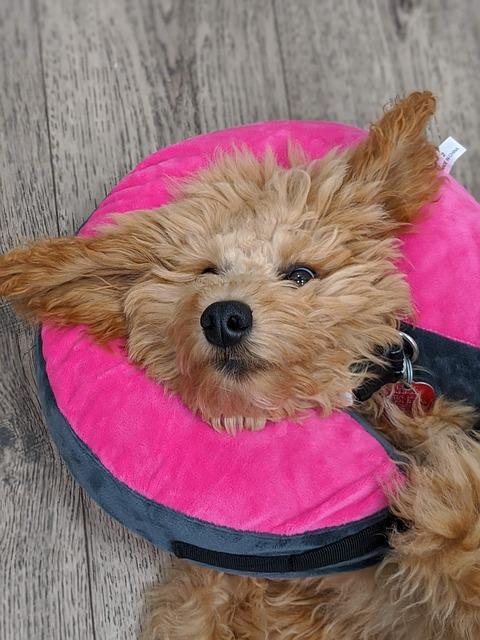Once upon a time in a cozy little house, a curious cat named Whiskers discovered a treasure trove of kibble. Each day, he nibbled and munched, savoring every bite. His owner, Sarah, watched with a mix of amusement and concern. “Is it okay for him to eat all day?” she wondered.
One afternoon, she consulted a wise vet who explained that while cats love to graze, moderation is key. Whiskers could enjoy his meals, but a balanced diet and playtime were essential for his health. With newfound knowledge, Sarah set a schedule, ensuring Whiskers thrived, not just survived.
Table of Contents
- Understanding Feline Feeding Habits and Their Natural Instincts
- The Impact of Grazing on Cat Health and Weight Management
- Choosing the Right Diet for All-Day Eating: Nutritional Considerations
- Establishing a Balanced Routine: Tips for Responsible Feeding Practices
- Q&A
Understanding Feline Feeding Habits and Their Natural Instincts
When considering a cat’s feeding habits, it’s essential to recognize their natural instincts as solitary hunters. In the wild, cats typically hunt small prey multiple times throughout the day, consuming small meals rather than large portions at once. This behavior is rooted in their evolutionary history, where the need to hunt and forage dictated their eating patterns. Understanding this instinct can help cat owners make informed decisions about their pets’ feeding schedules.
Many pet owners wonder if it’s acceptable for their feline companions to have access to food throughout the day. The answer largely depends on the individual cat’s health, activity level, and dietary needs. **Free feeding**, or leaving food out for cats to graze on, can be beneficial for some, especially those who prefer to eat smaller amounts more frequently. However, this approach can lead to overeating in less active cats, potentially resulting in obesity and related health issues.
Another aspect to consider is the type of food being offered. **High-quality, protein-rich diets** that mimic a cat’s natural prey can support their health and well-being. Cats are obligate carnivores, meaning their bodies are designed to thrive on animal-based proteins. Providing a balanced diet that aligns with their instincts can help maintain their energy levels and overall health, regardless of whether they eat all day or follow a more structured feeding schedule.
Ultimately, monitoring your cat’s behavior and health is crucial. If a cat seems to be eating excessively or gaining weight, it may be time to reassess their feeding routine. **Consulting with a veterinarian** can provide tailored advice based on your cat’s specific needs. By understanding and respecting their natural instincts, you can create a feeding plan that supports their health while allowing them to enjoy their meals in a way that feels instinctively right for them.
The Impact of Grazing on Cat Health and Weight Management
When considering the dietary habits of our feline friends, it’s essential to understand how grazing—allowing cats to eat small amounts throughout the day—can influence their overall health and weight management. Unlike dogs, cats are natural grazers, and their bodies are designed to process food in smaller, more frequent portions. This behavior mimics their hunting instincts, where they would catch and consume prey multiple times a day. By allowing cats to graze, we can align their feeding patterns with their natural instincts, potentially leading to better health outcomes.
However, unrestricted access to food can lead to overeating, which poses a risk for obesity. Obesity in cats is a growing concern, as it can lead to a myriad of health issues, including diabetes, joint problems, and heart disease. To mitigate these risks, it’s crucial to monitor the type and quantity of food available. Consider implementing a controlled grazing approach by:
- Providing measured portions of high-quality, nutritionally balanced food.
- Using puzzle feeders to encourage mental stimulation and slow down eating.
- Incorporating healthy treats in moderation to maintain interest without excessive calorie intake.
Another factor to consider is the nutritional content of the food offered. Cats are obligate carnivores, meaning their diet must be rich in animal proteins. Foods high in carbohydrates can lead to weight gain and other health issues. Therefore, selecting a diet that emphasizes protein while minimizing fillers is vital. Additionally, ensuring that fresh water is always available can help regulate their appetite and support overall health.
Lastly, regular veterinary check-ups are essential for monitoring a cat’s weight and health status. A veterinarian can provide tailored advice on feeding strategies and help identify any underlying health issues that may affect a cat’s weight. By combining a thoughtful grazing approach with professional guidance, cat owners can create a balanced environment that promotes healthy eating habits and maintains optimal weight for their furry companions.
Choosing the Right Diet for All-Day Eating: Nutritional Considerations
When considering a diet for cats that allows for all-day eating, it’s essential to focus on the nutritional balance of the food provided. Cats are obligate carnivores, meaning their diet must primarily consist of animal-based proteins. Therefore, selecting a high-quality cat food that lists a protein source as the first ingredient is crucial. Look for options that contain:
- Real meat or fish as the primary ingredient
- Essential amino acids, particularly taurine
- Healthy fats for energy and coat health
In addition to protein, the inclusion of appropriate carbohydrates can support a cat’s energy needs throughout the day. However, it’s important to choose carbohydrates that are easily digestible and beneficial. Some suitable options include:
- Brown rice or sweet potatoes for fiber
- Peas or pumpkin for added nutrients
- Limited grains to avoid digestive issues
Another vital aspect to consider is the moisture content of the diet. Cats often do not drink enough water, which can lead to urinary tract issues. Incorporating wet food into their all-day eating plan can help maintain hydration levels. Look for wet food options that are:
- High in protein and low in fillers
- Rich in moisture to support hydration
- Free from artificial preservatives and colors
Lastly, portion control is essential even when allowing all-day access to food. Cats can easily overeat, leading to obesity and related health problems. Consider using puzzle feeders or slow-feed bowls to encourage natural hunting behaviors and regulate their intake. This approach not only promotes a healthy weight but also provides mental stimulation, making mealtime more engaging for your feline friend.
Establishing a Balanced Routine: Tips for Responsible Feeding Practices
Creating a balanced feeding routine for your feline friend is essential for their overall health and well-being. Cats are natural grazers, and while it may seem appealing to allow them to nibble throughout the day, it’s crucial to establish a structured feeding schedule. This not only helps in managing their weight but also promotes better digestion and prevents behavioral issues related to food anxiety.
When planning your cat’s meals, consider the following tips:
- Portion Control: Measure out the appropriate amount of food based on your cat’s age, weight, and activity level. This helps prevent overeating and obesity.
- Scheduled Feeding: Instead of free-feeding, opt for set meal times. This encourages your cat to eat at specific intervals, mimicking their natural hunting behavior.
- Quality Over Quantity: Choose high-quality cat food that meets their nutritional needs. Look for options that are rich in protein and free from fillers.
- Hydration Matters: Ensure your cat has access to fresh water at all times. Proper hydration is vital for their health, especially if they are eating dry food.
Incorporating interactive feeding methods can also enhance your cat’s mealtime experience. Puzzle feeders or treat-dispensing toys can stimulate their minds and encourage physical activity, making mealtime more engaging. This not only helps in slowing down their eating pace but also provides mental enrichment, which is essential for indoor cats.
Lastly, always monitor your cat’s weight and overall health. Regular vet check-ups can help you assess whether your feeding routine is effective. If you notice any changes in their eating habits or weight, it may be time to adjust their diet or consult with a veterinarian. A balanced routine is key to ensuring your cat leads a happy and healthy life.
Q&A
-
Is it natural for cats to graze throughout the day?
Yes, cats are natural grazers. In the wild, they hunt small prey multiple times a day. This behavior translates to a preference for eating smaller meals throughout the day rather than large ones.
-
Can free-feeding lead to obesity in cats?
It can. While some cats can self-regulate their food intake, others may overeat if food is always available. Monitoring portion sizes and ensuring regular exercise is essential to prevent obesity.
-
What type of food is best for cats that eat all day?
A high-quality, balanced diet is crucial. Look for foods that are rich in protein and low in fillers. Consult your veterinarian for recommendations tailored to your cat’s specific needs.
-
How can I manage my cat’s eating habits?
Consider scheduled feeding times instead of free-feeding. This helps regulate their intake and can prevent overeating. Interactive feeders or puzzle toys can also stimulate their hunting instincts while controlling portions.
while cats may enjoy grazing throughout the day, it’s essential to balance their diet and monitor their health. A mindful approach to feeding can ensure your feline friend thrives, keeping their playful spirit alive and well.

大家好,我是彼得潘,專業的手法身體治療師。我喜歡探索和研究各種主題,並透過與人工智慧的合作分享專業、實用、有趣的文章。我們定期進行人工審核,以確保內容的準確性。如果您發現文章中有任何不準確的地方,請隨時與我們聯繫,我們會及時糾正。您可以透過 [email protected] 與我們聯繫。



